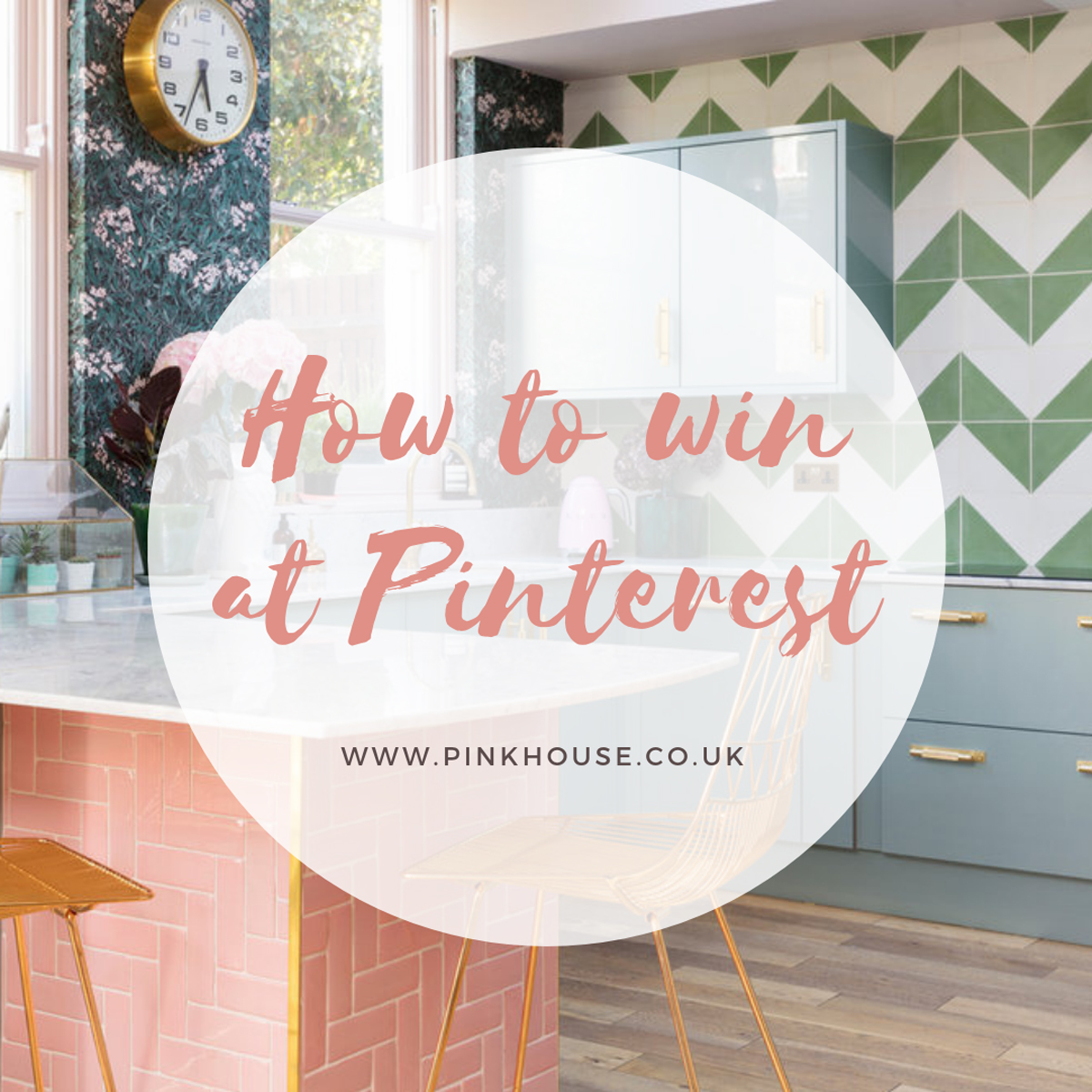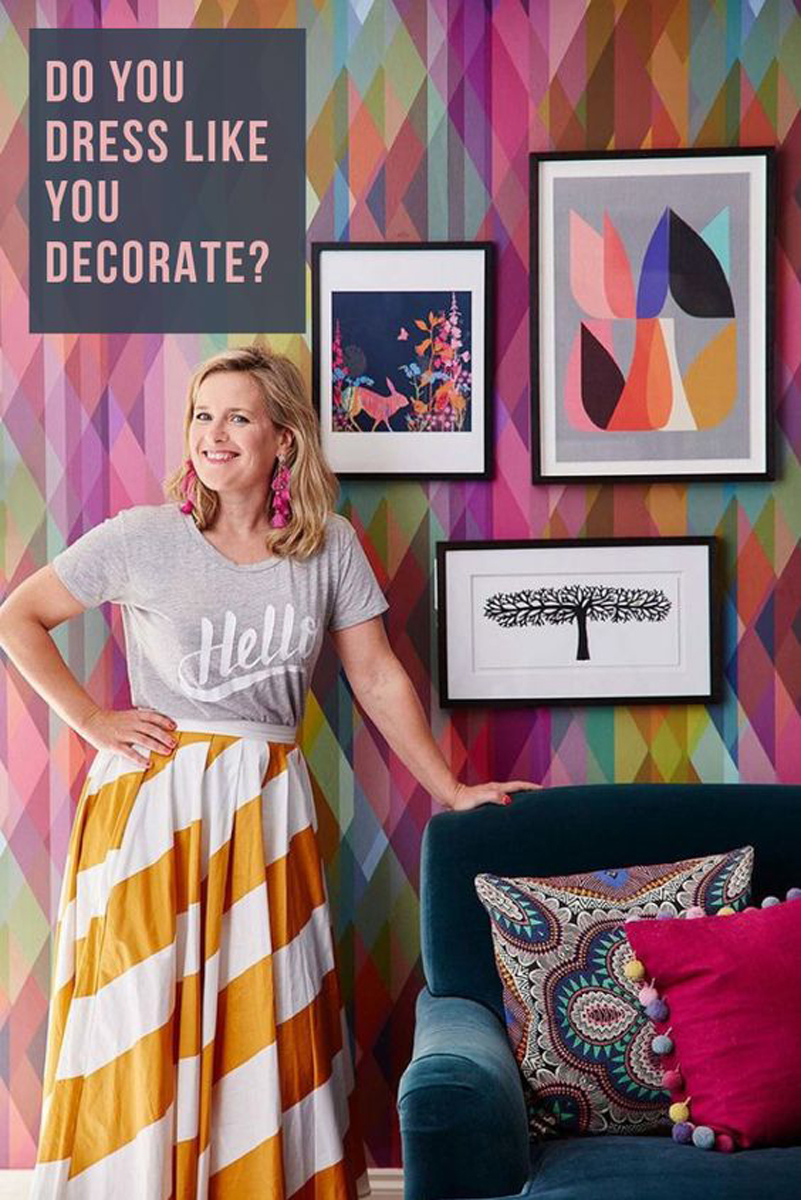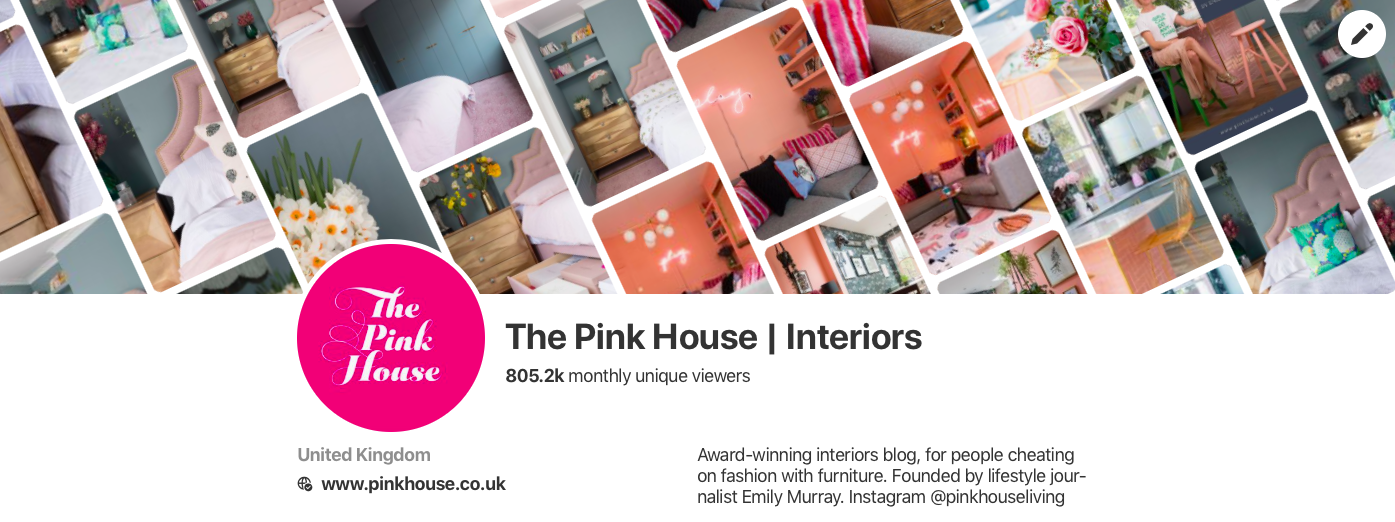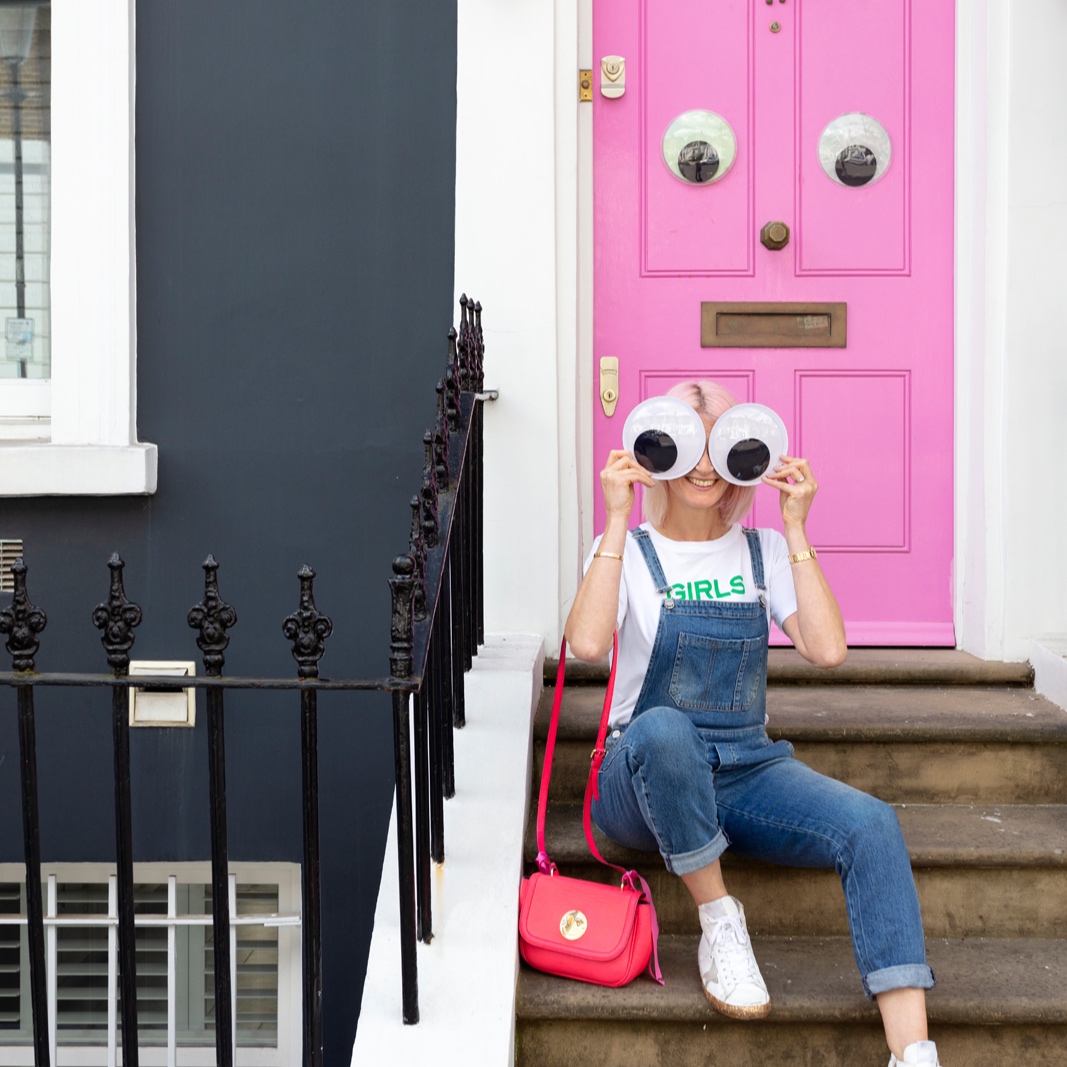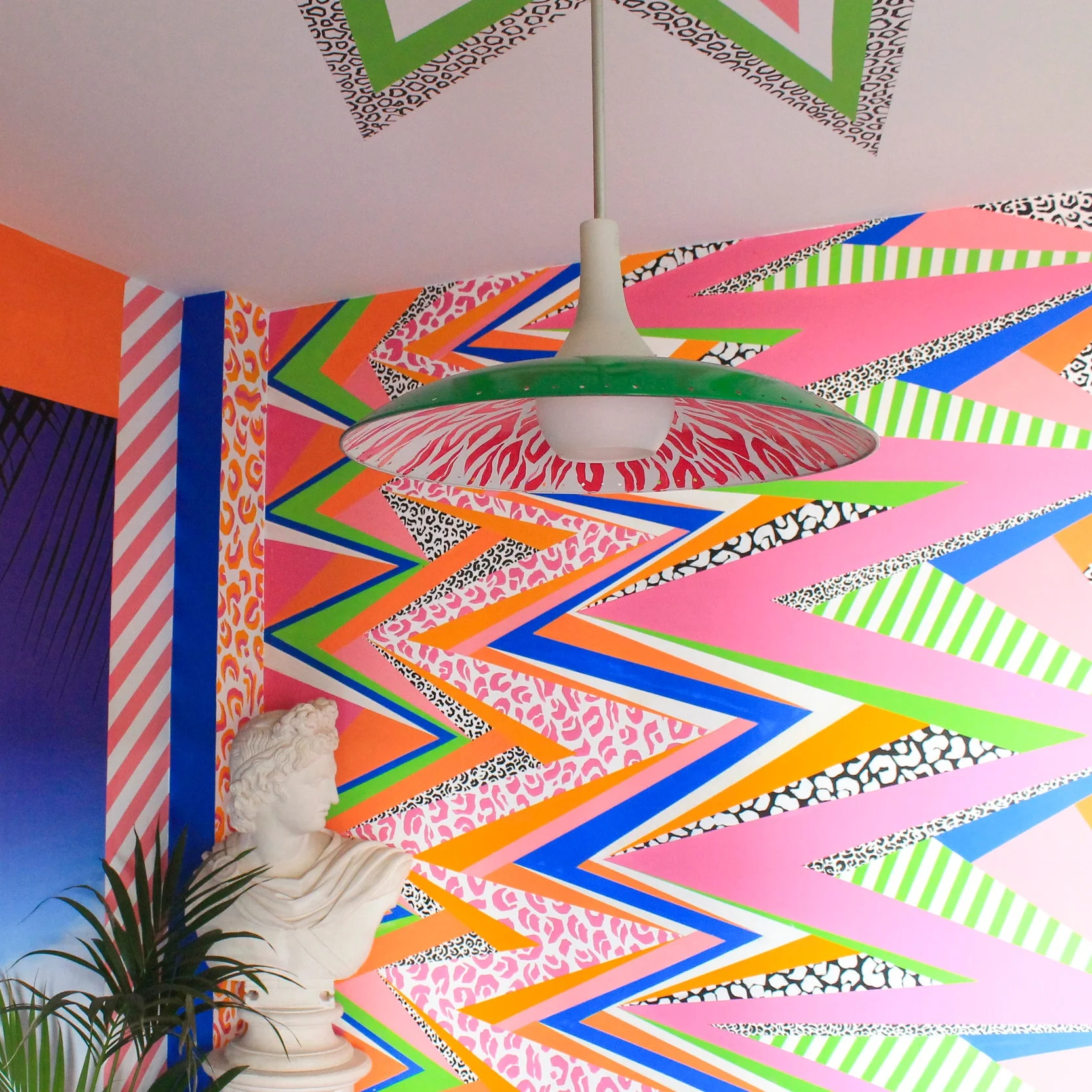Pinterest, eh? We interior bloggers can get all excited about the room renovation possibilities, pinning hundreds of images of brass taps and tiled hallways, then promptly forget all about it for weeks.
But the truth is, Pinterest is one of the most important tools out there for driving traffic to your blog and so should be part of your regular social media strategy.
Here’s a few reasons why:
Pinterest is a search engine rather than just a social platform, so if you have good blog content and know how to amplify it you’ll go far even if you don’t have many followers.
Pinterest users want information, so Pinterest encourages linking to blog posts – unlike other social platforms which punish you for linking out (boo!).
The life of a pin is 105 days – compared to 24 minutes for Twitter and 90 minutes for Facebook – so a little effort goes a long way.
Alright, we’ve convinced you. But how do you up your Pinterest strategy from ‘Pinning things I like every 6 weeks’? Read on…
One of The Pink House’s best performing pins, with text added using Canva
1) Shape up your Pins
The first (and most important) point is to make sure you’re pinning great content that’s perfectly formatted for Pinterest.
As Trinny and Susannah taught us, dimensions are everything. For Pinterest, images in a 2:3 ratio work best, with Pinterest HQ saying 600 x 900 pixels is the ideal. You don’t necessarily need to whip out your digital ruler, just remember that images roughly the shape of your phone (portrait) will perform best.
2) Work it with words
Pinterest feeds can be crowded places, full of images clamouring for your users’ attention. Think of your pin as a poster for your blog – if it was on a billboard across the road, would it grab you? Think simple lines, focal points and good quality imagery. As well as…
Words! What would your perfect poster be without a headline? Pinterest users love pins with text on them and they regularly top The Pink House’s best performing Pinterest content. Work with a designer or use a free (and idiot-proof) tool like Canva to create pins with writing. Always link your pins back to the relevant blog post, because that’s the main way you’ll drive traffic.
The Pink House’s profile cover and description
3) Clean up your profile
Make sure your profile description is accurate and stuffed full of keywords. In The Pink House’s (pinkhousepins on Pinterest) case: interiors, furniture, fashion, journalist, Instagram and lifestyle. The profile cover (header image of tiles) is customisable and should show off what your blog is about – The Pink House profile cover is set to a board of its eponymous home’s interiors (rather than new pins), so visitors to the profile immediately ‘get’ what The Pink House is.
Another Pink House pin with text, driving traffic to the new book blog post
4) Get tagging (boring but important)
The image description is crucial. Make sure it’s laden with keywords, in sentence format rather than a list. Then add 4-6 hashtags – Pinterest is mostly used as a search engine like Google so keywords and hashtags are really important.
Find the best ones by consulting Pinterest trend reports or typing in the Pinterest search bar and seeing what it wants to auto-complete with. For example, if you start to write ‘pink’ it throws out ‘pink and grey bedroom’, which must be a term people are searching for and something on which we can provide content.
5) Drip-feed your Pins
Once you’re on a roll with Pinterest it’s tempting to go mad and pin hundreds of things at once. But it’s actually best to spread out your pinning to capitalise on followers seeing all your pins and not just one. That doesn’t mean you need to set an alarm for some frantic 4am pinning though, just use Pinterest’s in-built scheduling tools or pay for approved scheduling tool Tailwind.
Remember, re-pinning content is a really quick win – use your analytics to find out which content is performing best on Pinterest and which drives the most pinners to your blog. Repin these repeatedly until the end of time.
6) Plan the perfect board
When making a new board (or tidying up an old one), bear these tips in mind:
Board names can be quirky, but 4 words or fewer is best.
Board descriptions cannot be quirky. Have a fairly utilitarian couple of sentences with keywords and 4-6 hashtags to help your board show up in people’s searches.
You ideally need 40 pins or more per board – you can arrange boards into sections and hide boards until they’re ready for the world.
7) Get a (free) business upgrade
Upgrading your account to business will give you loads of great features like the platform’s analytics tools which help feed into your Pinterest strategy. And it’s free!
You’ll also be able to use Rich Pins, a feature which helps pull more information from your website to your pin, making them more useful (and therefore more popular and clickable) than regular pins with zero extra effort.
There we have it! Pinterest, made easy. You’re welcome!
Follow Pink House Pins on Pinterest for interiors mood boards, blog content and ALL the #pinkspiration.

